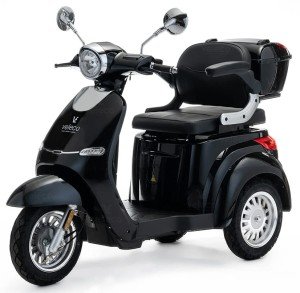Guide To Velco: The Intermediate Guide For Velco
페이지 정보
작성자 Margie 작성일 25-07-05 11:38 조회 7 댓글 0본문
Velcro: A Revolutionary Fastening Solution
Intro
Velcro, a name that has nearly ended up being synonymous with hook-and-loop fasteners, has actually transformed the way we think about attaching materials. Typically a staple in different markets and homes, Velcro provides a basic yet effective solution to secure objects without the requirement for buckles, buttons, or zippers. This article dives into the origins, systems, applications, and advantages of Velcro as well as dealing with some often asked questions.
The Origins of Velcro
Velcro was created in the late 1940s by Swiss engineer George de Mestral. After a searching journey in the Alps, Mestral ended up being captivated by the burrs that adhered to his pet's fur. Upon closer evaluation, he realized they operated through a system of tiny hooks that captured anything with a loop, including fabric and fur. Acknowledging the potential of this natural attachment mechanism, Mestral embarked on a journey to recreate it in an artificial type. By 1955, he had patented his invention, branding it "Velcro," a combination of the French words "velours" (velvet) and "crochet" (hook).
How Velcro Works
Velcro consists of 2 separate pieces: a hook side and a loop side. These 2 parts interlock when compressed, creating a strong bond that can be quickly launched with a basic pull. The functioning of Velcro can be broken down into these primary components:
| Component | Description |
|---|---|
| Hook Side | This side includes small hooks that catch and hold onto loops. |
| Loop Side | This side includes soft loops created to yield to hooks when called. |
System of Fastening
- Interlocking: The hooks on one side capture the loops on the other, developing a physical interlock.
- Strength: Velco (pop over to this website) The number of hooks and loops ensures a substantial holding strength, making it appropriate for both light and heavy-duty applications.
- Ease of Use: Velcro can be disengaged and re-engaged various times without losing its effectiveness, setting it apart from more conventional fastening approaches.
Applications of Velcro
Velcro has found application throughout a myriad of sectors, including:
Fashion Industry
- Sportswear
- Shoes (particularly kids's footwear)
- Accessories (belts, bags)
Medical Field
- Orthopedic gadgets
- Bandages
- Prosthetics
Automotive and Aerospace
- Seat covers
- Interior linings
- Security equipment
Family Items
- Curtains
- Rugs
- Organizers
Industrial Use
- Cabling
- Equipment securing
- Tools storage
Advantages of Velcro
The popularity of Velcro can be credited to a number of advantages it uses over conventional attaching approaches:
- Quick and Easy to Use: No tools are needed, making it easy to use.
- Versatile: Works on various surfaces and products.
- Adjustable: Allows for easy modification in size (e.g., straps).
- Durable: Holds up under repetitive use.
- Washable: Maintains its function even after cleaning.
Possible Drawbacks
While Velcro is advantageous in many contexts, there are some restrictions to be mindful of:
- Noise: The noise of Velcro being pulled apart can be loud in quiet settings.
- Use and Tear: Over time, extreme use might result in fraying or decreased efficiency.
- Limitations with Heavy Loads: While it can hold substantial weight, it might not appropriate for extremely heavy items.
Frequently asked questions about Velcro
1. Is Velcro waterproof?
Yes, Velcro can be made from waterproof materials, making it suitable for outside and marine applications.
2. Can Velcro be reused?
Absolutely! Velcro is created for duplicated usage, and many products can be resealed and opened numerous times.
3. How do you clean Velcro?
Cleaning up Velcro is simple. You can utilize a lint roller or a soft brush to remove debris. For stubborn dirt, it might be washed gently with water.
4. Is Velcro strong enough to replace zippers?
In lots of applications, yes, Velcro can effectively change zippers, especially in instances where fast attachment and unfastening are required.
5. Are there different kinds of Velcro?
Yes, there are lots of types, including differing widths, colors, adhesive strengths, and materials developed for various applications (i.e., high-temperature, outdoor, and so on).
Velcro has shown to be a versatile and ingenious attaching solution that has actually infiltrated several sectors, improving both daily life and industrial applications. Its ability to offer a trusted and user friendly technique of securing makes it an enduring part of contemporary design. From casual garments to advanced medical applications, Velcro continues to maintain its credibility as a staple fastening approach for countless usages. Whether it's for the style enthusiast or a professional in the medical field, Velcro stays an unsung hero on the planet of securing innovation.
By changing how we link and protect products, Velcro is a testimony to the power of ingenious thinking and simpleness in design. As innovation progresses, we can only anticipate a lot more creative applications for this remarkable creation in the future.

- 이전글 The 10 Most Terrifying Things About Windows And Doors Near Me
- 다음글 The 10 Most Scariest Things About Headset For Sale
댓글목록 0
등록된 댓글이 없습니다.
